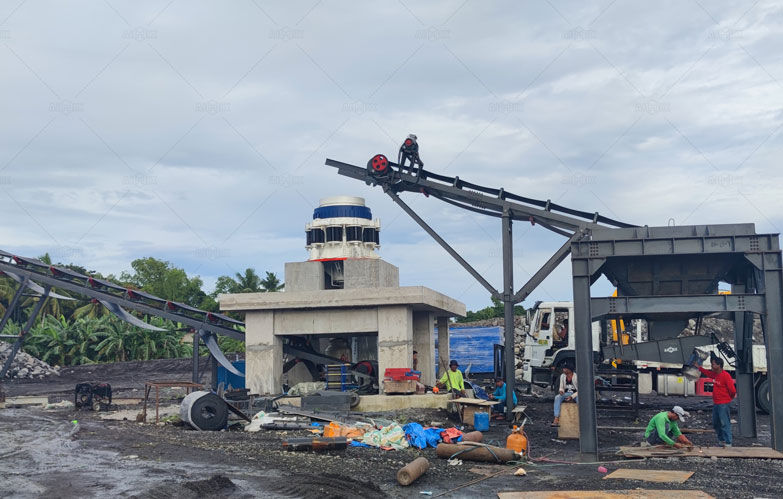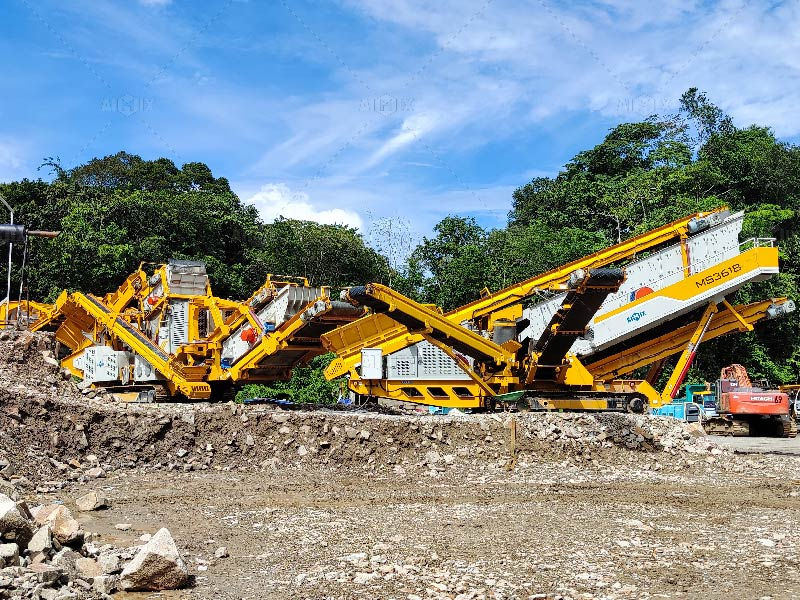Five Typical Scenarios for Aggregate Crushing Plant Applications in Latin America
- info515452
- 7月30日
- 讀畢需時 4 分鐘
The demand for aggregate materials in Latin America continues to grow steadily, fueled by the expansion of urban infrastructure, transportation networks, and energy projects. In this context, the role of the aggregate crusher plant is more vital than ever. But while the need is shared across the region, the applications of these plants can vary widely depending on the specific local scenario.
Understanding the most common use cases for aggregate crushing equipment(planta de agregados)—particularly mobile units like the portable debris crusher and compact concrete crusher—can help contractors, investors, and developers make more informed decisions regarding equipment selection, site setup, and ROI planning. Below are five typical scenarios where these plants are making an impact across Latin America.
Urban Redevelopment Projects in Metropolitan Areas
In countries like Brazil, Colombia, and Mexico, aging infrastructure and housing stock in major cities are being demolished to make way for new developments. These projects often generate large amounts of construction and demolition (C&D) waste, including old concrete, bricks, and asphalt. Instead of transporting this material to landfills, many contractors opt for on-site crushing.
In this context, a portable debris crusher is the ideal solution. It enables teams to reduce, recycle, and reuse materials without moving them off-site. Mobile units are also easy to relocate, making them suitable for dynamic urban environments where space and accessibility are limited.
This method not only reduces transportation costs and landfill use but also creates high-quality recycled aggregates that can be reused directly in road base, drainage layers, or even new concrete mixes.
Highway Construction Across Mountainous Regions
Latin America’s geography presents unique engineering challenges, especially in countries like Peru, Chile, and Ecuador where roadways must traverse mountainous terrain. Building or expanding these roads requires vast quantities of crushed stone and gravel for base and surface layers.
In these cases, a mobile aggregate crusher plant proves invaluable. Fixed facilities are often impractical in remote or rugged locations. A mobile plant can be brought directly to the site, reducing the need for long-haul transportation of raw materials.
The ability to process materials on-site increases efficiency and reduces environmental impact, aligning well with modern green infrastructure practices. Additionally, in steep terrains where logistics are complex, setting up a flexible crushing solution saves both time and cost.
Large-Scale Mining Support in the Andes
Mining remains a pillar of the Latin American economy, particularly in Chile, Peru, and Bolivia. Mining operations often require substantial support infrastructure, such as haul roads, processing facilities, and worker housing, which all rely on aggregate materials.
For this reason, many mining companies deploy a concrete crusher(trituradora de hormigón) or aggregate crusher plant alongside their main operations. These plants process blasted rock and overburden into usable materials for internal construction and road maintenance. This strategy minimizes reliance on external suppliers and ensures a consistent material supply in remote mining zones.
Additionally, mining regulations in several countries now emphasize sustainable site management. Crushing and reusing material directly on-site supports these environmental goals.
Residential Housing Projects in Expanding Suburbs
With rising urban populations, many Latin American countries are promoting large-scale housing developments in the suburbs of cities like Buenos Aires, Santiago, and Lima. These projects require huge volumes of concrete for foundations, roads, and community facilities.
Developers often establish a dedicated aggregate crusher plant and concrete plant nearby to streamline logistics. By creating a localized material supply chain, they reduce construction delays and lower transportation costs. Having a crusher plant onsite allows the reuse of native stone or local excavation waste, while a concrete plant provides fresh ready-mix concrete on demand.
This setup is especially common in planned developments where multiple housing units are being built in phases over several years.

Post-Disaster Reconstruction and Emergency Infrastructure
Natural disasters such as earthquakes, hurricanes, and floods frequently affect regions like Central America and the Caribbean. After such events, there's often an urgent need to rebuild roads, bridges, and homes. Speed and adaptability are crucial.
Here, portable debris crushers(trituradora de escombros portátil) and mobile aggregate crusher plants become essential assets. Emergency response teams can deploy these units to disaster zones to begin processing rubble and debris into usable aggregate. The resulting materials can be used to build temporary roads, emergency shelters, or quickly restore critical infrastructure.
This approach not only accelerates reconstruction efforts but also helps communities recover economically by reducing cleanup costs and jumpstarting local employment.
Conclusion: Matching the Plant to the Scenario
Each of these five scenarios highlights a different way in which aggregate crusher plants are contributing to infrastructure and development throughout Latin America. Whether it’s a concrete crusher for urban renewal, a portable debris crusher for emergency situations, or a full aggregate crusher plant supporting highway or mining projects, the key is matching the equipment to the specific needs of the job site.
For contractors and developers, understanding these scenarios and planning accordingly can improve operational efficiency, reduce environmental impact, and enhance profitability.
If you're exploring options for your next project, now is the perfect time to evaluate the role of mobile or stationary crushing plants. The versatility and cost-efficiency they offer could be the competitive advantage you're looking for.






留言